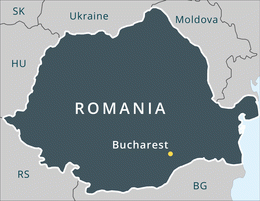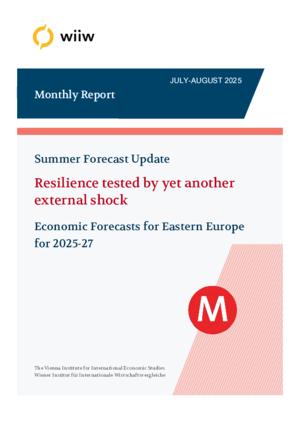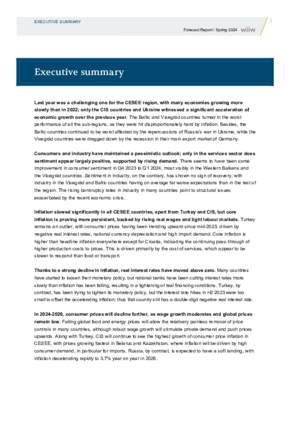Romania

Economic growth is projected to be 1.2% in 2025, well below earlier forecasts. While investment is set to increase and agricultural conditions may improve, fiscal austerity and weak external demand remain major constraints. There was an uptick in investment in Q1, with EU fund disbursements surpassing the total for the whole of 2024. Even if some funds are lost, Romania still expects annual inflows of about 2% of GDP in Recovery and Resilience Facility funds in 2025 and 2026, plus around 3% of GDP under the Multiannual Financial Framework. Household consumption will remain a key driver of growth, but will slow due to weak gains in real wages. Wage freezes in the public sector, selective tax hikes and the rollback of price controls will all weigh on private spending. However, the recent pension reform and earlier increases in the minimum wage will continue to support disposable income. Inflation averaged about 5% in H1 2025 and is expected to rise in Q3, once energy subsidies are removed. Given the elevated outlook for inflation, the central bank is unlikely to cut the policy rate in 2025. The exchange rate, previously stable to support anti-inflation efforts, has recently weakened due to the political uncertainty. Confidence may return if the incoming government enacts credible fiscal consolidation measures from 1 July. These could include a hike in VAT, excise duties and income tax; a crackdown on tax evasion; and cuts in administrative spending. The government will need to commit itself to reducing the deficit from 9.3% of GDP to 7.5% in 2025 and then maintain a steady consolidation path in the following years. Also, the external deficit has been a drag on the economy. The Q1 trade deficit exceeded last year’s high level, as imports outpaced exports. A hard landing is looming as a downside risk, given the absence of a resolute fiscal and current account consolidation.
| |
|
|
|
FORECAST* |
| Main Economic Indicators | 2022 | 2023 | 2024 | 2025 | 2026 | 2027 |
| Population, 1000 persons | 19049 | 19061 | 19052 | . | . | . |
| GDP, real change in % | 4.0 | 2.4 | 0.8 | 1.2 | 2.3 | 3.0 |
| GDP per capita (EUR at PPP) | 26460 | 29690 | 31110 | . | . | . |
| Gross industrial production, real change in % | 0.5 | -3.0 | -1.5 | . | . | . |
| Unemployment rate - LFS, in %, average | 5.6 | 5.6 | 5.4 | 5.5 | 5.4 | 5.0 |
| Average gross monthly wages, EUR | 1242 | 1424 | 1636 | . | . | . |
| Consumer prices, % p.a. | 12.0 | 9.7 | 5.8 | 5.1 | 4.5 | 3.8 |
| Fiscal balance in % of GDP | -6.4 | -6.6 | -9.3 | -7.5 | -6.4 | -5.5 |
| Public debt in % of GDP | 47.9 | 48.9 | 54.8 | . | . | . |
| Current account in % of GDP | -9.5 | -6.6 | -8.2 | -8.2 | -7.5 | -6.5 |
| FDI inflow, EUR m | 11452 | 8074 | 6586 | . | . | . |
| Gross external debt in % of GDP | 54.6 | 56.5 | 57.9 | . | . | . |
Basic data are continuously updated.
* Forecasts are changed beginning of January, April, July and November.
See Press Conferences.
publication_icon
Monthly Report No. 7-8/2025
Vasily Astrov, Alexandra Bykova, Selena Duraković, Meryem Gökten, Richard Grieveson, Maciej Grodzicki, Ioannis Gutzianas, Doris Hanzl-Weiss, Gabor Hunya, Branimir Jovanović, Niko Korpar, Dzmitry Kruk, Sebastian Leitner, Isilda Mara, Emilia Penkova-Pearson, Olga Pindyuk, Sandor Richter, Marko Sošić, Bernd Christoph Ströhm and Maryna Tverdostup
wiiw Monthly Report No. 7-8, July-August 2025
38 pages including 5 Tables and 3 Figures
Details
publication_icon
Executive summary
Olga Pindyuk
in: The Crisis is Over, but its Scarring Effects are Hindering Recovery
wiiw Forecast Report No. Spring 2024, April 2024 , pp. I-VII
Details
Economic growth is projected to be 1.2% in 2025, well below earlier forecasts. While investment is set to increase and agricultural conditions may improve, fiscal austerity and weak external demand remain major constraints. There was an uptick in investment in Q1, with EU fund disbursements surpassing the total for the whole of 2024. Even if some funds are lost, Romania still expects annual inflows of about 2% of GDP in Recovery and Resilience Facility funds in 2025 and 2026, plus around 3% of GDP under the Multiannual Financial Framework. Household consumption will remain a key driver of growth, but will slow due to weak gains in real wages. Wage freezes in the public sector, selective tax hikes and the rollback of price controls will all weigh on private spending. However, the recent pension reform and earlier increases in the minimum wage will continue to support disposable income. Inflation averaged about 5% in H1 2025 and is expected to rise in Q3, once energy subsidies are removed. Given the elevated outlook for inflation, the central bank is unlikely to cut the policy rate in 2025. The exchange rate, previously stable to support anti-inflation efforts, has recently weakened due to the political uncertainty. Confidence may return if the incoming government enacts credible fiscal consolidation measures from 1 July. These could include a hike in VAT, excise duties and income tax; a crackdown on tax evasion; and cuts in administrative spending. The government will need to commit itself to reducing the deficit from 9.3% of GDP to 7.5% in 2025 and then maintain a steady consolidation path in the following years. Also, the external deficit has been a drag on the economy. The Q1 trade deficit exceeded last year’s high level, as imports outpaced exports. A hard landing is looming as a downside risk, given the absence of a resolute fiscal and current account consolidation.


